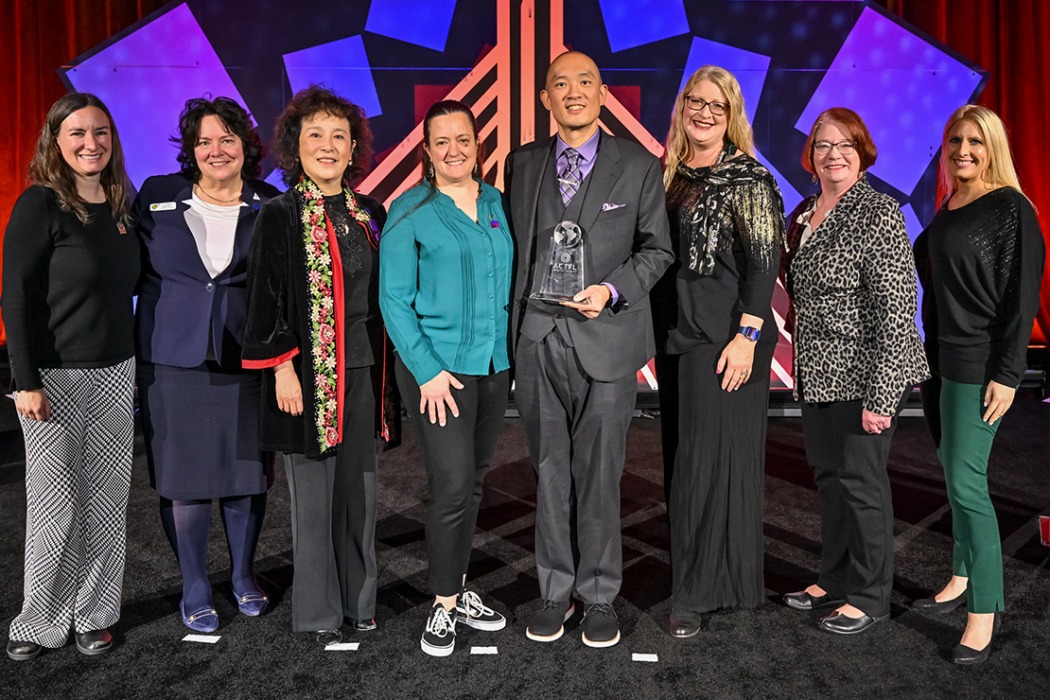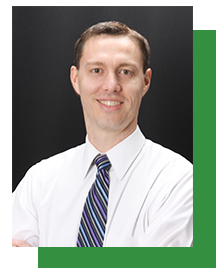Caleb Howard

2018 Hall of Fame Nominee

Dr. William Mennies Elementary School
Vineland, NJ
2018 Finalist from NECTFL
Spanish
I was a completely different teacher after I came back from my first ACTFL convention.
The students all stared at me as I started apologizing:
Boys and girls, I’m sorry. I think I’ve been getting it all wrong! I just spent the weekend at this place where Spanish teachers learn how to teach Spanish better. It was GREAT -- but guess what. People taught me that Spanish class works best when the teacher speaks Spanish to the students almost the WHOLE class time. They said I should try for 90%! How do you think I’ve been doing at that?! Not so good, right?
We used a timer for a few days to find out exactly how much of the target language I was speaking (or WASN’T speaking) in class. I couldn’t believe that I never got past 15%!
We decided to take the “90+% TL” plunge. At first, my knee-jerk reaction was to speak in English to make sure that students would get a tricky point, but I kept to the plan and I was flabbergasted that the students responded so well. My students come from an underserved district (≈70% Free and Reduced Lunch) so they live and study in a context of many challenges. However, this ACTFL endorsed strategy helped me to engage students who had never been able to show me what they were capable of doing. Instead of the stale and routine classes I had been earnestly imposing on my students, one by one, they began to excel. I created an authentic space where Spanish came alive because my students needed it for everyday interactions and to participate in standards-based activities. I finally had what I needed to give ALL my students, regardless of their socioeconomic background, a culturally-rich, proficiency-based language learning experience.
Encouraged by my students’ response and performance, I decided to submit a proposal to present at the next ACTFL conference. My approved session was entitled, “Towards 90+% Target Language Use: An Elementary Teacher’s Journey.” The session was a great success because language teachers were hungry for the practical advice and support I shared about how to keep in the target language. So many of them wanted to achieve the 90+% target language use goal, but they just didn’t know how. After the workshop, many attendees signed up to receive more information so I decided to share with them regularly. I created “Tuesday’s Tips For Staying In The Target Language” and, without missing a single week, I wrote blog posts for the next two years. My writings included scripts for exactly what teachers can do and say in order to achieve 90+% target language use. Many found the information useful so the ideas spread and I even began receiving correspondence from educators worldwide. I was really moved when an Italian teacher in Australia said that my example had inspired her and that she managed to influence her entire 7-member department to switch to a proficiency-based instructional model. Teachers and students in my local community, and far beyond it, were succeeding at communicating in the target language and it all started by being open about my own journey.
My blogging experience, and participation at the ACTFL conventions, energized me and gave me a thirst for further collaboration and professional growth. I started exploring best practices for assessment using NCSSFL-ACTFL Can-Do statements. I reflected on language acquisition theory and its pedagogical implications. I started tapping into the wealth of professional development resources on social media, including the #langchat hashtag. I invented #TL90plus to develop an ongoing conversation regarding target language use. I collaborated with teachers from other states to develop resources and wrote for a journal in Switzerland. As my personal learning network grew, my own practice developed.
Opportunities to learn and share were everywhere: regional events, Ed Camps for world language teachers, the chance to support teachers as they implement technology in their classrooms. Outside of the language department, I have addressed my entire school staff and trained them on cultural politeness and on strategies to show appreciation for diversity. I have flung open the doors of my classroom to receive educators not only from New Jersey, but from other regions and countries. During such visits, we use every second to share and grow, keeping the conversation going through lunch and prep. The question that drives us all is “How can we implement effective strategies within our diverse academic contexts?” Soon, the invitations started to arrive to present at nearby districts, the state organization, and in Canada.
When world language professionals work together, we can elevate our profession and the importance of language learning in the eyes of community members, district administrators, and the public. Beyond our classroom walls, I believe that we have an obligation to teach multiple stakeholders about the important work we are doing. My own district, for example, has a large Hispanic population, but many non-Hispanics oppose bilingual education. To help the public understand its importance, I have contributed to the promotion of the benefits of foreign languages and biliteracy, I have taught Spanish to community members, and I have hosted lessons at local Starbucks stores for adults and children of all ages. School events such as “Back To School Orientation,” and “5th Grade Moving Up Ceremonies” provide me with an opportunity to advocate for language learning and to speak publicly to the community members in both English and Spanish to create an environment of cross-cultural appreciation and collaboration.
Professional involvement has transformed me because I realize that I am not alone on my professional journey and that there is a network of excellent language teachers everywhere. From the moment I walked up to the registration booths at ACTFL, I began an exciting journey of collaboration and learning that has had a great impact on me, my students’ second language acquisition process, and educators worldwide. Together, we can increase multicultural sensitivity and can offer our students the gift of linguistic ability. With that gift, they too will be able to reach out across the walls of their homes and local experiences just like I did when the walls of my classroom opened to the world.